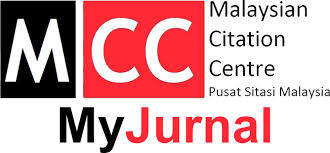MARKETING MANIPULATION: A LITERATURE REVIEW OF ITS ANTECEDENTS, MECHANISMS, OUTCOMES, AND MODERATORS
Keywords:
Marketing manipulation, Consumer welfare, Marketplace efficiency, Deceptive advertising, Information asymmetry, Cognitive biases, Social influence, Public policyAbstract
Abstract: Marketing manipulation is a critical area of research with important implications for consumer welfare and public policy. This literature review synthesizes and analyses the research on marketing manipulation to provide an understanding of its key dimensions, antecedents, mechanisms, outcomes, and moderators. The review identifies five key dimensions of marketing manipulation: information asymmetry, cognitive biases, emotional appeals, social influence, and deceptive advertising. Antecedents, such as individual differences and cultural factors, can influence the extent to which consumers are susceptible to marketing manipulation. Mechanisms, such as the use of emotional appeals or social influence, can affect the ways in which consumers are manipulated by marketing tactics. Outcomes, such as consumer behaviour or well-being, can be influenced by the extent and type of marketing manipulation. Moderators, such as situational factors or regulatory frameworks, can affect the extent to which marketing manipulation is effective or harmful. The review concludes with a discussion of the implications of marketing manipulation for consumer welfare and public policy, as well as future research directions and methodological considerations for studying this phenomenon.
References
Ariely, D. 2008. Predictably irrational: The hidden forces that shape our decisions. Harper Perennial; Expanded edition (April 27, 2010).
Bagozzi, R. P., Gopinath, M. & Nyer, P. U. 1999. The role of emotions in marketing. Journal of the Academy of Marketing Science 27(2): 184-206.
Böckenholt, U. & Hügelschäfer, S. 2020. Detecting and measuring susceptibility to manipulative advertising. Journal of Consumer Psychology 30(3): 392-408.
Cialdini, R. B. & Goldstein, N. J. 2004. Social influence: Compliance and conformity. Annual Review of Psychology 55: 591-621.
De Mooij, M. 2018. Global marketing and advertising: Understanding cultural paradoxes. SAGE Publications.
European Union. 2011. A renewed EU strategy 2011-14 for Corporate Social Responsibility. COM (2011) 681 final.
Federal Trade Commission. 2021. Advertising and marketing on the internet: Rules of the road. Retrieved from https://www.ftc.gov/tips-advice/business-center/guidance/advertising-marketing-internet-rules-road.
Giesler, M., & Pohlmann, M. 2003. Emotional branding and the strategic value of the doppelgänger brand image. Journal of Marketing 67(2): 1-27.
Hastings, G., Stead, M. & Webb, J. 2020. Fear appeals in social marketing: Strategic and ethical reasons for concern. Psychology and Marketing 37(7): 883-896.
Hoch, S. J. & Ha, Y. W. 1986. Consumer learning: Advertising and the ambiguity of product experience. Journal of Consumer Research 13(2): 221-233.
Khoo, H. L., Teh, H. H. & Tan, S. J. 2018. The impact of culture and religion on the perception of deceptive advertising: An exploratory study in Malaysia. Journal of Business Ethics, 152(2): 557-569.
Kotler, P., Kartajaya, H. & Setiawan, I. 2017. Marketing 4.0: Moving from traditional to digital. John Wiley & Sons.
Obermiller, C. & Spangenberg, E. R. 2017. Implementing and regulating deceptive marketing. Journal of Public Policy and Marketing 36(2): 153-166.
Otnes, C. C. & Maclaran, P. 2018. Using qualitative methods to understand and combat marketing manipulation. Journal of Business Research 88: 376-382.
Smith, A. N. & Cooper-Martin, E. 2018. Advertising and manipulation: A conceptual framework for understanding the issue. Journal of Business Ethics 149(3): 745-755.
Stiglitz, J. E. 2015. Inequality, wealth and growth: Why capitalism is failing us. New Statesman 144(5286): 19-25













